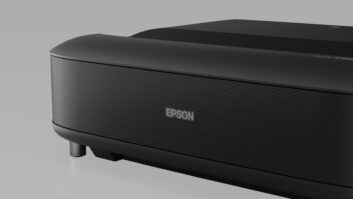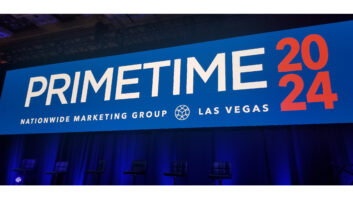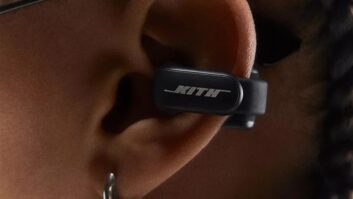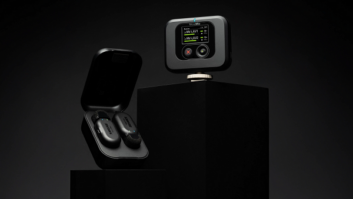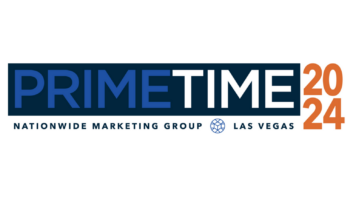TWICE: Starpower was at the forefront of Ultra HD TV as a regional launch pad. A year-and-a-half later, where do we stand with the category?
Dan Pidgeon, chairman, Starpower Home Entertainment Systems: When people walk in and see the 4K display – it is obviously presented at the very front of our stores – they gravitate right toward it and are just in awe.
I was very excited to read about Netflix shooting “House of Cards” in 4K. Now we have an opportunity to go through Netflix to get that into people’s homes. That is huge. My feeling is that now all of a sudden everybody else is going to have to follow suit. DirectTV and Verizon, if they are going to be relevant in 4K or next-generation television, they need to invest and get out in front of it.
The fact that Netflix jumped out there and said, “Hey, we are going to produce in 4K,” even if it’s only one show, that is good enough for me. Now we have a selling point, and we have dialogue on the floor with our consumers to say, “Whoa, this is not some aberration or something way out there for people who are in the 1 percent.” This is something that is reasonably priced. It is aspirational but not quite as aspirational as the original 4Ks were. It has been electric on our floor. Our 4K sales have really been going through the roof, and it is exciting to see that in the TV category, which we have lost in recent years to becoming a commodity.
TWICE: So there’s no upsell.
Pidgeon: That is the beauty of it. We have had to retrain our sales staff over the last five years, “Stop selling TVs, stop selling TVs.” Now all of a sudden it’s, “Wait, sell TVs.” You have something great to talk about here. You build the [average selling price].
I have always used the rule of thumb that you should at least be able to get on the attachment what you got on the video. If you’re selling a $5,000 TV, you ought to be able to get $5,000 in attachments. That rule of thumb now helps us. When it was $1,000 and you were getting $1,000 in attachments, that’s not quite as great. Now we have an opportunity to build sales again and re-engage previous customers: “Hey, if you are an early adopter, you need to transition toward this 4K set. This is important. This is what it is going to be. You need to jump on board.” That resonates with a consumer rather than, “Hey, we’ve got a cheap TV. Do you want to come buy it?”
Tom Hickman, electronics senior VP, Nationwide Marketing Group: People pay for picture quality. Whenever you have a demonstrable leap in picture quality you have adoption.
Pidgeon: Absolutely.
Hickman: Look at when you have an iPhone or iPad with Retina display and anything that has increased picture quality. Consumers will come out and pay for it.
TWICE:Is the move from HD to Ultra HD revolutionary, like the switch from analog to HD, or more of a feature enhancement?
Hickman: I would lean more toward new feature.
Dave Workman, ProSource: For a point of reference though, in the origins of the high-definition TV, most consumers were buying a form factor in combination with the resolution story. The last chapter in that evolution is yet to be told.
It will be interesting to see with some of the new smartphone designs whether the curve will become the new definition of a status product in the home, as we start to see some reinvention of the form factor as well as the performance of the screen. If the smartphones all start coming out with a curve, and that is the thing that people view as sexy, there could be some exciting momentum around more than just picture performance.
The biggest risk for the industry is saying there’s going to be a huge increase on a percentage basis with this technology. We all have to be cautious about whether or not the pricing can be maintained. There are a few vendors out there that are like suicide bombers with dynamite strapped to their chests, ready to blow this sucker up, and if that occurs we are right back to where we started again.
TWICE: What do the roadmaps look like for the first half?
Workman: The roadmaps we have seen look sensible, and it looks like the pricing should come down by mid-year to where we can start to see the type of 10x sell-through increase that some of the vendors are talking about.
The question is whether the consumer will be inundated with $500 4K TVs like you see if you go over to China, where everything is 4K and they are just sloppy TVs that have the moniker pasted on it. Telling a differentiated story with the quality brands is going to be critical for this to be a long-term success, vs. something where we say, “Well, we screwed that one up too.”
Stephen Baker, The NPD Group: So far the evidence is good. The holiday traffic was 15,000 4K TVs for five weeks, and that is about as much as we tracked in the five or six months before that. It’s five times more than there was in October, and almost all of the sales are major brands that are real 4K.
We continue to hear that the other stuff doesn’t sell real well and there are a lot of return issues. In general, we have seen a lot of Chinese guys struggle when you get to the big screens anyway, because most consumers want brands that they are more comfortable with.
Pricing is coming down, but just like in some other places it is great to have step-ups. Yeah, maybe you are talking about a $5,000 set, but we’ll sell a lot more at $3,000. It’s not a comparison of $5,000 to $3,000; the real comparison is you may have spent $2,000 and now have a reason to spend $3,000. I’m getting an extra $1,000 rather than losing that $2,000. That is the way you have to look at it. From our perspective, those are pretty good sales results. We expect to see those things really move as we get into the back half of this year.
Rick Souder, Crutchfield: If the content comes along, the upscale is accepted and people get excited about it. I think it is the most tangible reason to spend more on a TV than we have had in a very long time. It is already a meaningful business for the specialty channel in general and there is great potential there.
Spending time in our retail store, I’m surprised at just how much is on the customer’s mind in terms of content. Dan was saying they see the picture and they say it is great, but they are watching nature scenes or bowls of fruit, and they want to know “What kind of content can I get?”
Other than the very early adopters that just have to have the latest and greatest, there is no surprise that content is going to be a big part of it. You guys [Amazon.com] had your big announcement, which is encouraging.
Ben Hartman, VP CE, Amazon.com: We’re pretty excited about Ultra HD 4K. We did announce that Amazon Studios is filming all of our content in 4K in 2014. I think it is great that Amazon is, and other studios are as well.
There is a path to getting native content, but by and large customers are ready. We had millions and millions of customers in 2013 come and research 4K on Amazon. We didn’t get millions of buyers yet. So when we talk about cost being high and cost coming down, I think that is a key factor in 2014 – we are expecting a reasonable step-up to 4K on midtier and premium models. Hopefully we’ll also get some good ways to see native content.
Again, this is a great example of it being really challenging to just go and buy the technology. There are a lot of questions. “Will my Blu-ray player work? Is this futureproofed, or am I going to have to buy a new item in two years?” All of these questions are tough, but online and on Amazon we are answering those questions through customer reviews, and we have a research center for consumers at Amazon.com/4K. I think that online, and Amazon in particular, is a good way that customers are figuring all of this stuff out.
TWICE: Where is the pricing sweet spot?
Hartman: I don’t know the definite price point, but I would definitely say if you take your midtier and mid- to high-end models and you have a reasonable premium to that, I think that is where we will wind up as we go through the year. Customers are going to make that choice. Customers are choosing to make those premium step ups, and this is a case where we are going to see that in 2014.
Workman: What the vendors haven’t talked about is if 4K does fulfill their predictions, what are they are going to do with their premium 2K product? Because if 4K is as successful as they want it to be, premium 2K could be dead as a doornail for these same vendors.
This is going to be a really challenging year because you may have a runaway success on one side as they bring the prices down into rational tiers and pricing, but they are going to have a real challenge with the inventory of the premium 2K, which is still in their product planning. Tom, you have been in the TV business. How would you look at that?
Hickman: I would agree with you. It is a very real risk, and there are people that are betting heavily on premium 2K. It all comes down to how much discipline we have. We are not particularly known for discipline in this business from a pricing standpoint.
Workman: One way or another something will have to give. If 4K takes off, they will have built premium 2K sets into their roadmap. What are they going to do? Does that create another level of price compression off of the 2K sets?
Souder: I have a feeling we will sit here next year and we will have seen an increase in the mix of higher-end TVs just because there is a more tangible benefit out there. A premium 2K, whatever was driving it, got to be less and less effective. Now there is something new and exciting for people.
TWICE:What role will OLED play in all this?
Pidgeon: Ultra HD 4K has reached the consumer level where there is awareness there, but with OLED there is still some confusion about it. “I thought we already had LED TV. I don’t get OLED.” There doesn’t seem to be that consumer drive to come in and actually seek out an OLED set, whereas there is certainly consumer traction to come in and seek out 4K.
TWICE:There is enough of a learning curve explaining UHD.
Pidgeon: It confuses me. [Laughter]
TWICE: Are we piling too much new technology on the consumer?
Pidgeon: I like it. I like having it. I like being able to show it. If you look at it, it is clearly impressive. I don’t think it hurts anything. Is it a Beta-VHS race? I don’t know, but it is certainly out there. Clearly we have not had the success on OLED that we have had with 4K, but it doesn’t bother me. It’s not like, “Oh, we have to merchandise one of those.” It’s a cool TV.
Hickman: You can never have too much technology in the store as a high-end footprint driver.
Souder: If a customer comes in and sees OLED, it is stunning. It really draws their attention.
“Wow, I’d love to have one, but it’s not going to happen.”
“Let me talk about another great picture technology that is much more reasonably priced.”
Just like having high-quality headphones out there has lifted the business, having the higher-quality television picture has as well.
Workman: For 2014 you only really have one vendor that is making an aggressive stand in OLED. Everyone else has pretty much said “4K, bring it on. UHD is our future, and I want to be No. 1, I want to be No. 1, I want to be No. 1.”
The pricing on OLED is obviously really, really high. The movement is toward the bigger screens. If you take a 75-inch or larger OLED, you are talking museum-quality pricing. A sheik might come and buy one, but otherwise it is not anywhere close to mainstream.
Hartman: In 2014, 2015 and maybe 2016 people will adopt UHD, and maybe we will sit here in 2017 and talk about the next transition.
TWICE: What is Abt doing with the category?
Mike Abt, Abt Electronics: We are doing everything. A smart retailer wants to carry everything. Anything that is more upscale and higher priced you have to show. That is what makes us different than a lot of other people.
TWICE: Where is it in the store?
Abt: It changes every day in the store, but OLED was right in the front. It is by far the most impressive TV. That is the one that people just stop and stare at. It really is amazing, but it is priced too high. It’s not so viable. That’s why Sony backed off it this year. But 4K is great; it’s selling well.
TWICE: So no consumer resistance?
Abt: 3D was really a hard sell. We didn’t believe in it, the salesmen didn’t believe in it, and the customer maybe went to a movie and saw it once and didn’t believe in it either.
Workman: What is interesting is OLED is trying to get to the point that 3D was supposed to get to without all of the crap with the glasses. When you see an OLED set it is almost 3D, so you don’t have all of the encumbrances of that. The consumer likes it. They just didn’t want to wear glasses.




